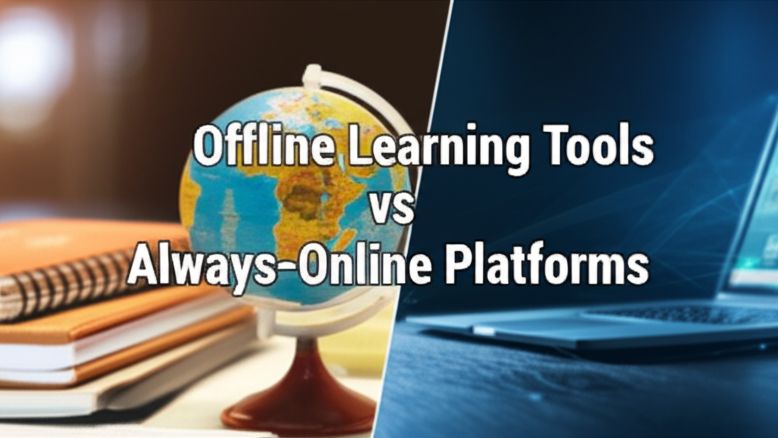
Offline Learning Tools vs Always-Online Platforms: Which is Right for You?
In today’s world, learners have access to a vast array of resources. Two distinct approaches dominate the educational landscape: offline learning tools and always-online platforms. Let’s dive into a comparison to help you decide which suits your learning style best.
Offline Learning Tools: The Traditional Approach
What are they?
Offline learning tools encompass traditional resources such as textbooks, workbooks, printed study guides, and physical flashcards. Think of it as the classic, no-internet-required method.
Pros:
- Focus and Concentration: Without the distractions of social media, notifications, and endless internet browsing, it’s easier to maintain focus on the task at hand.
- Tangible Learning: Some learners find it easier to absorb information from physical materials. Highlighting, annotating, and physically interacting with the material can enhance retention.
- No Dependency on Internet: This is a huge advantage in areas with unreliable internet access or when you simply want to disconnect.
- Cost-Effective (Sometimes): While textbooks can be expensive initially, they often offer long-term value and can be reused or resold.
Cons:
- Limited Scope: Information might be outdated or incomplete compared to the readily updated content available online.
- Portability Issues: Carrying multiple textbooks and workbooks can be cumbersome.
- Lack of Interactivity: Offline resources often lack the interactive elements that online platforms provide, such as quizzes, simulations, and collaborative features.
- Difficulty in Finding Answers: If you get stuck, you’re limited to the information available in your resources or waiting until you can ask someone for help.
Always-Online Platforms: The Digital Revolution
What are they?
Always-online platforms encompass e-learning websites, online courses, interactive apps, and digital resources accessible via the internet. Kwizy, of course, falls into this category! 😉
Pros:
- Accessibility and Convenience: Learn anytime, anywhere, with an internet connection.
- Interactive and Engaging: Online platforms often incorporate multimedia elements, quizzes, simulations, and gamified learning to enhance engagement.
- Up-to-Date Information: Content is regularly updated to reflect the latest developments in the field.
- Collaborative Learning: Many platforms offer opportunities to connect with other learners through forums, chat groups, and online communities.
- Personalized Learning: AI-powered platforms can adapt to your learning style and provide personalized recommendations.
- Vast Resources: The internet provides access to almost limitless information.
Cons:
- Distractions: The temptation to browse social media or engage in other online activities can be a significant distraction.
- Internet Dependency: Requires a reliable internet connection.
- Potential for Information Overload: With so much information available, it can be challenging to discern credible sources from unreliable ones.
- Technical Issues: Technical glitches, software updates, and compatibility issues can disrupt the learning process.
- Cost: Online courses and platforms can sometimes come with a hefty price tag.
The Verdict: A Balanced Approach
The best approach often involves a blend of both offline and online learning tools. Use textbooks and workbooks for focused study sessions and foundational understanding. Supplement your learning with online platforms for interactive exercises, up-to-date information, and collaborative opportunities.
Consider your personal learning style, preferences, and the availability of resources when making your decision. Some people prefer the focused approach of print, while others thrive in the dynamic online environment. Experiment and discover what works best for you!
Ultimately, the most effective learning strategy is the one that keeps you engaged, motivated, and consistently moving towards your goals.